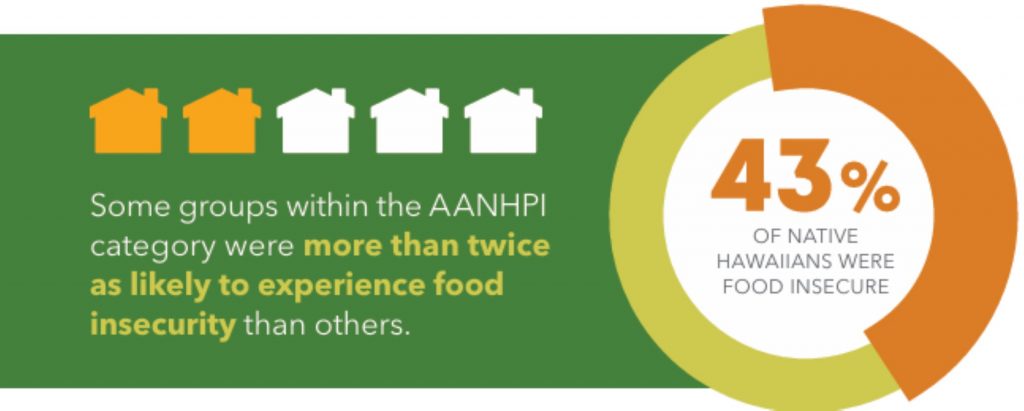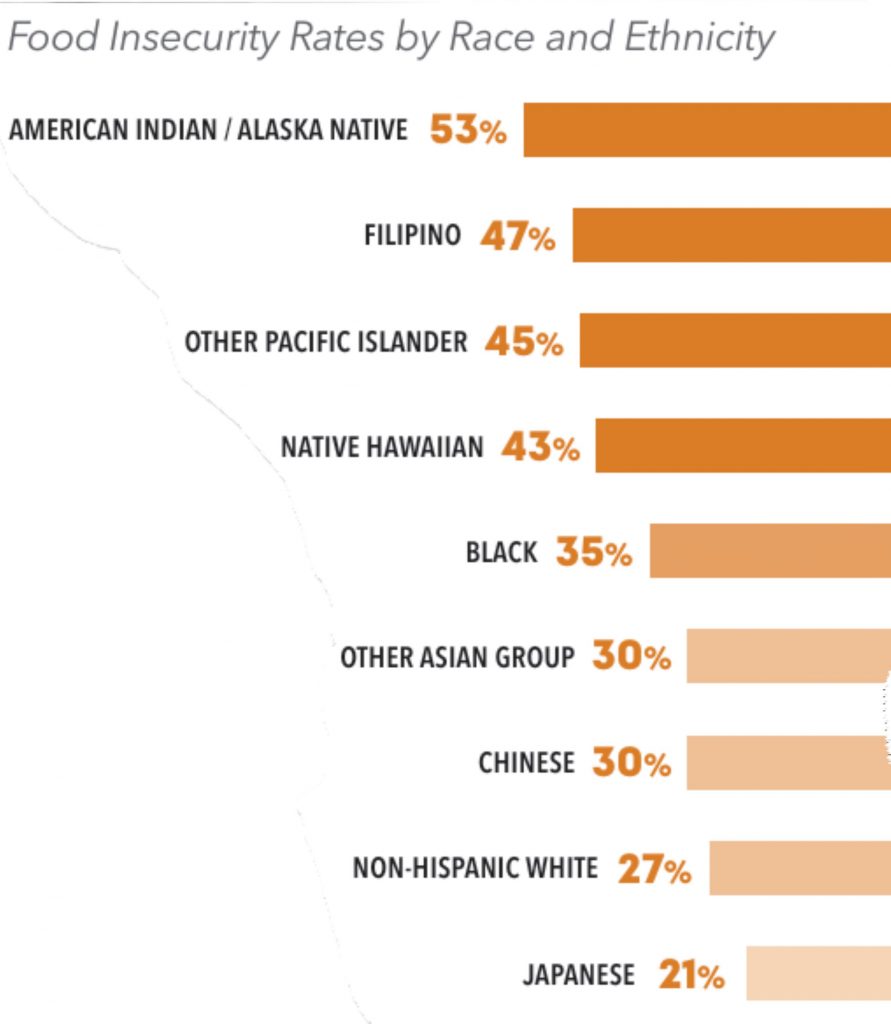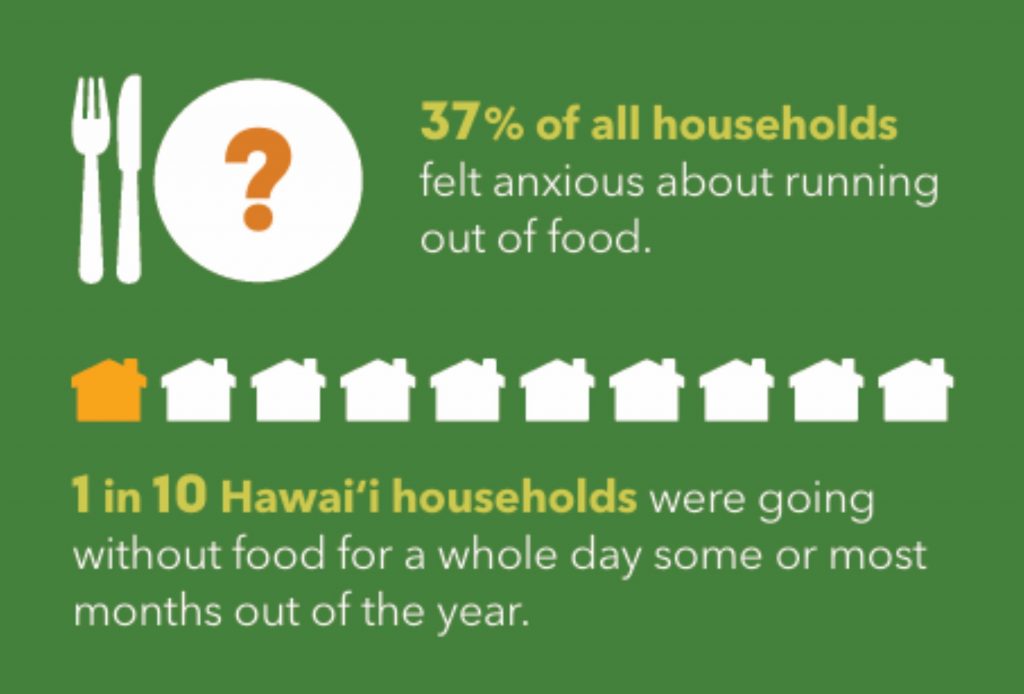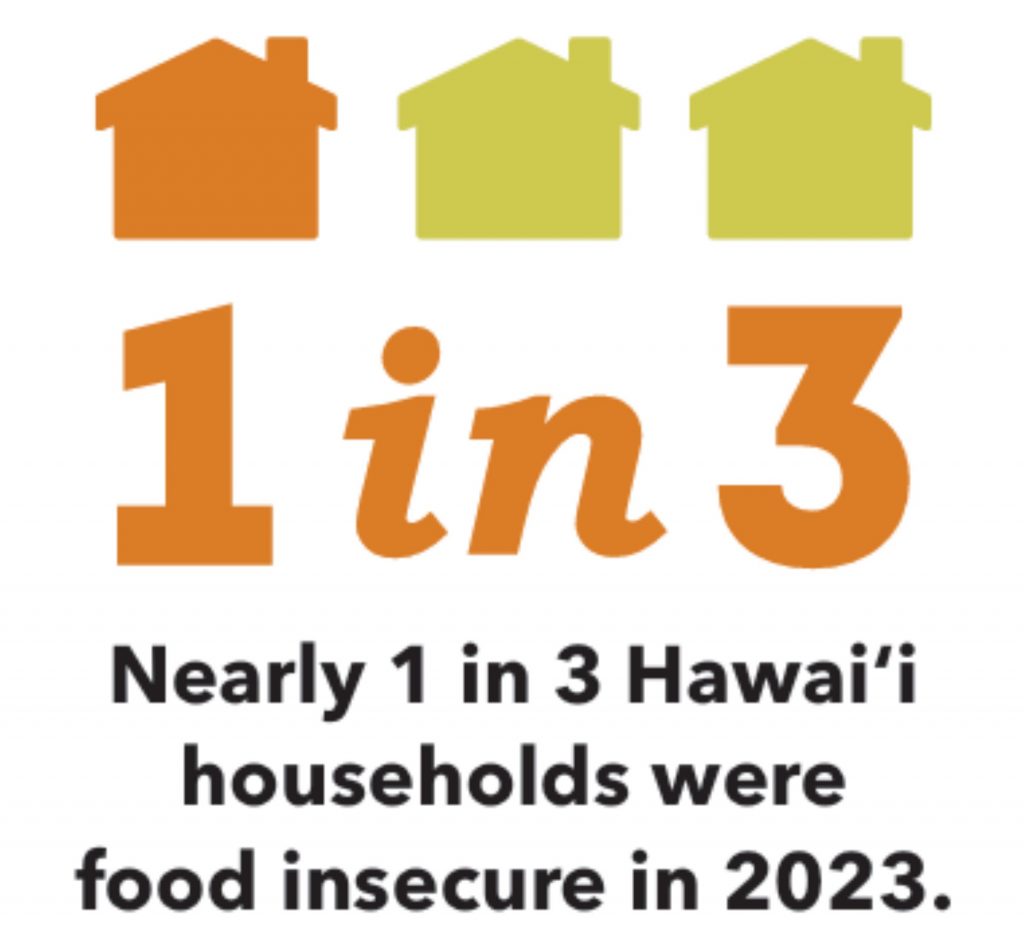New study: Household food inseurity highest on Big Island

Nearly one-third of Hawaiʻi households and 1 in 3 keiki in the state experienced food insecurity in 2023. Household food insecurity was highest on the Big Island.
Those statistics are among several findings setting off alarm bells after Hawaiʻi Foodbank released a comprehensive report detailing the state of food insecurity throughout the islands in 2023.
The study surveyed 910 residents from various racial and geographic backgrounds. Key findings from the report underscore the severity of food insecurity in the state:
- 30% of households in Hawaiʻi experienced food insecurity.
- About 29% of children experienced food insecurity, with 6% going an entire day without food.
- 38% of adults in households with children experienced food insecurity.
- 10% of households had at least one member who went without food for an entire day.
- Household food insecurity was highest on Hawaiʻi Island, followed by Maui, Oʻahu and Kauaʻi.
- Young adults ages 18 to 29 were the most affected by food insecurity, with 44% of those enrolled in higher education being food insecure.
- More than 40% of Native Hawaiians, other Pacific Islanders, Filipinos and American Indian/Alaska Natives lived in food-insecure households.
- 46% of respondents who identified as gay, lesbian, bisexual or some other identity than straight were living in food insecure households.
- About 20% of Hawai‘i residents were affected by the Maui wildfires, with those affected twice as likely to be food insecure.

Commissioned to gain a deeper understanding of the challenges faced by local communities and evaluate the efficacy of existing hunger relief initiatives, the study sheds light on critical aspects of food insecurity and its impact on Hawaiʻi’s diverse population.
The first since 2014, the food insecurity study serves as a stark reminder of the unique challenges facing Hawaiʻi’s communities.
Hawai‘i Foodbank is serving an average of nearly 160,000 people each month.
This upward trend in need is the highest since the peak of the COVID-19 pandemic and is exacerbated by a variety of recent factors such as the end of pandemic-related federal and local support programs, increasing grocery prices and an elevated cost of living, the Maui wildfires and more.
“Food insecurity is such a complex issue and needs to be examined at an even deeper level within the context of Hawaiʻi — taking into account our individual challenges, infrastructure, policies, programs and people,” said Hawai‘i Foodbank President and CEO Amy Miller, emphasizing the significance of local data in tackling food insecurity. “By better understanding these unique variations in need within our local communities, we can develop more targeted, collaborative and comprehensive strategies to address food insecurity in Hawai‘i.”
That’s an important step in achieving the ultimate vision of a Hawai‘i, said Miller, where everyone has consistent access to safe and nutritious food to thrive.

Data and information in the report will play a pivotal role in guiding Hawaiʻi Foodbank’s future initiatives and focus areas as it endeavors to alleviate food insecurity throughout the islands.
The nonprofit agency provides food assistance to the state, serving O‘ahu and Kaua‘i directly while partnering with The Food Basket to serve Hawai‘i County and Maui Food Bank to serve Maui County.
Together, they work to ensure no one in the entire Hawai‘i ‘ohana goes hungry.
By leveraging the findings of the new food insecurity study, Hawaiʻi Foodbank aims to better fulfill the needs of the community and foster a more food-secure future for all residents.
The full report is available for review online.
Sponsored Content
Comments
















